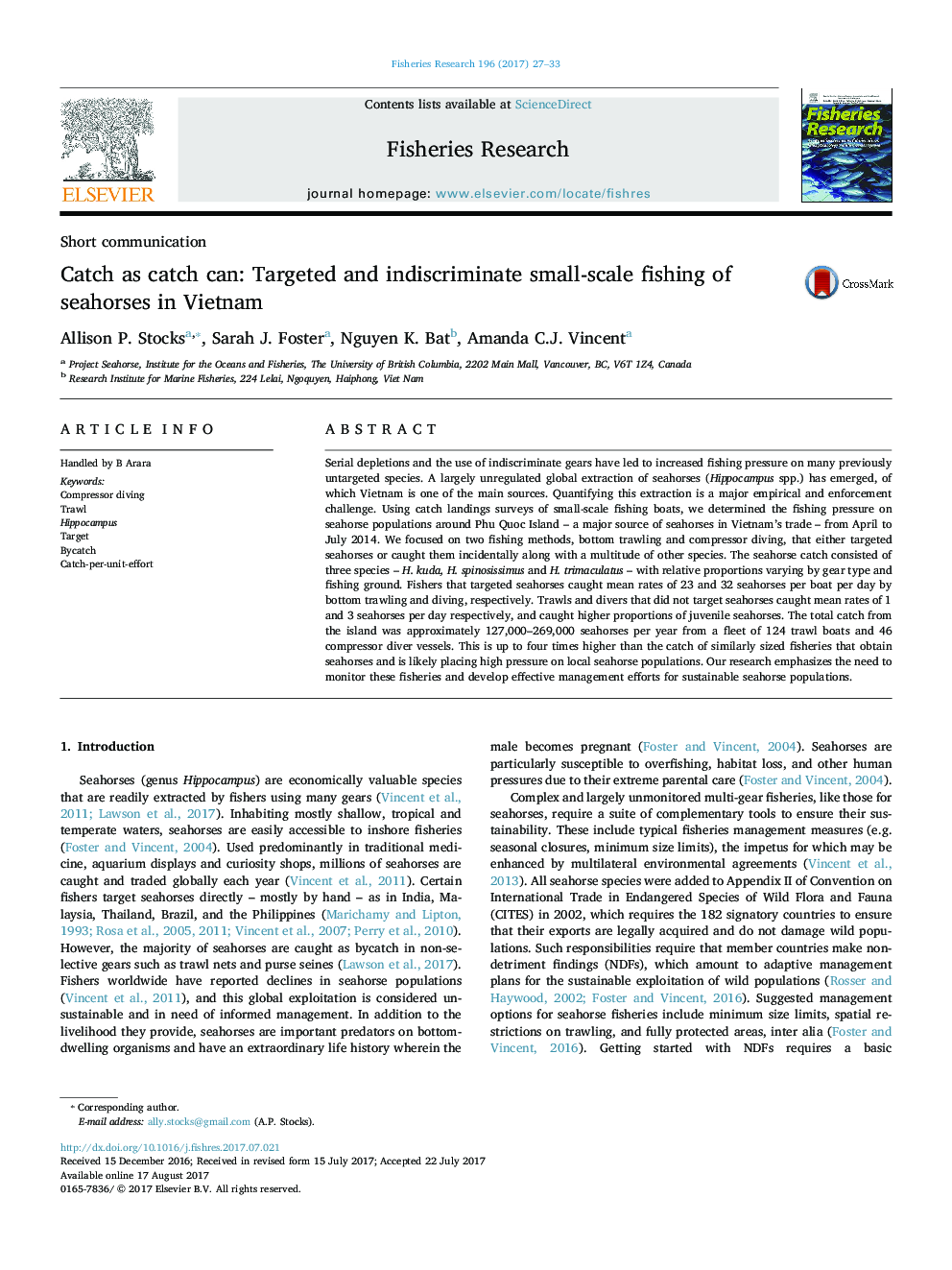| Article ID | Journal | Published Year | Pages | File Type |
|---|---|---|---|---|
| 5765390 | Fisheries Research | 2017 | 7 Pages |
â¢In S. Vietnam, bottom trawling and compressor diving are fishing methods that target seahorses or catch them incidentally.â¢Fishers that targeted seahorses caught mean rates of 23 and 32 seahorses boat-1 day-1 by trawling and diving, respectively.â¢Trawls and divers that didn't target seahorses caught 1 and 3 seahorses boat-1 day-1 respectively, and proportionally more juveniles.â¢The total catch from Phu Quoc Island, Vietnam was 127,000-269,000 seahorses per year from 124 trawlers and 46 dive boats.â¢The high fishing pressure should be monitored and effective management developed to ensure sustainable seahorse populations.
Serial depletions and the use of indiscriminate gears have led to increased fishing pressure on many previously untargeted species. A largely unregulated global extraction of seahorses (Hippocampus spp.) has emerged, of which Vietnam is one of the main sources. Quantifying this extraction is a major empirical and enforcement challenge. Using catch landings surveys of small-scale fishing boats, we determined the fishing pressure on seahorse populations around Phu Quoc Island - a major source of seahorses in Vietnam's trade - from April to July 2014. We focused on two fishing methods, bottom trawling and compressor diving, that either targeted seahorses or caught them incidentally along with a multitude of other species. The seahorse catch consisted of three species - H. kuda, H. spinosissimus and H. trimaculatus - with relative proportions varying by gear type and fishing ground. Fishers that targeted seahorses caught mean rates of 23 and 32 seahorses per boat per day by bottom trawling and diving, respectively. Trawls and divers that did not target seahorses caught mean rates of 1 and 3 seahorses per day respectively, and caught higher proportions of juvenile seahorses. The total catch from the island was approximately 127,000-269,000 seahorses per year from a fleet of 124 trawl boats and 46 compressor diver vessels. This is up to four times higher than the catch of similarly sized fisheries that obtain seahorses and is likely placing high pressure on local seahorse populations. Our research emphasizes the need to monitor these fisheries and develop effective management efforts for sustainable seahorse populations.
